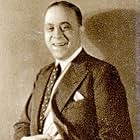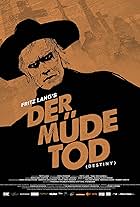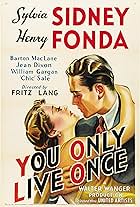The Spiders - Episode 1: The Golden Sea
Original title: Die Spinnen, 1. Teil - Der Goldene See
IMDb RATING
6.5/10
1.5K
YOUR RATING
Kay Hoog finds a message that indicates that some Incas are still alive, but the secret organisation "Die Spinnen" wants the Incas' gold....Kay Hoog finds a message that indicates that some Incas are still alive, but the secret organisation "Die Spinnen" wants the Incas' gold....Kay Hoog finds a message that indicates that some Incas are still alive, but the secret organisation "Die Spinnen" wants the Incas' gold....
- Awards
- 1 nomination
Photos
Hans Lanser-Ludolff
- Partygast im Klub
- (uncredited)
- Director
- Writer
- All cast & crew
- Production, box office & more at IMDbPro
Storyline
Did you know
- TriviaOriginally planned as a series of four films. The last two parts not made were titled 'Um Asiens Kaiserkrone' (part 3) and 'Im Spinnennetz' (part 4).
- ConnectionsEdited into Histoire(s) du cinéma: Une histoire seule (1989)
Featured review
In 1919 Fritz Lang passed up the opportunity to direct the now better-known Cabinet of Doctor Caligari, arguably the first German Expressionist Film, in order to make this apparently lightweight and simplistic adventure yarn. This is perhaps a surprise for those who see Lang as obsessed with deep and dark psychological studies but, in truth, Lang had a passion for easygoing comic book fare. Here Lang gets to indulge an action-adventure streak that carries through his work right up to his Indian diptych of 1959.
It has to be said, the story of The Spiders' is paper-thin. Lang would construct far stronger plot lines in his collaborations with Thea von Harbou, but he penned this one on his own. His approach to storytelling is almost childlike, full of bizarre turns and constantly changing location and pace, as if to cram in as many ideas as possible. Yes, it's altogether flimsy and lacking in any depth, but it barely matters when the plot functions largely as an excuse for leading onto the next action set piece. It actually also occurred to me that Kay Hoog abandoning his yacht race to embark on a search for treasure might be a tongue-in-cheek reference to Lang's rejection of the Caligari project. Unlikely, but it would be very apt.
As to Fritz Lang's abilities as a filmmaker, well, he had a fair way to go still in terms of grasping the form. In terms of staging action he follows the parallel editing techniques of DW Griffith. That's not a bad thing in itself, it's just that sometimes there's not enough correlation between the individual shots, and it gets a bit confusing as to where everyone is in relation to each other. Take for example the opening scene where an Inca stalks an explorer. We can infer that they are wandering around on the same cliff edge, but we don't really sense the danger the hunted man is in. Lang could have solved this by throwing in a point-of-view shot of the Inca looking down at the explorer or, better still, have the Inca appear in the frame behind and above him in a long shot. It's as if Lang knows what the script demands, but can't visualise the finished product and isn't experienced enough to know what will and won't work.
What is distinctive about The Spiders however, and what makes it recognisable as one of Lang's, is its use of space. Lang trained as an architect at one point in his youth, and this is reflected in his shot composition. The sets here were designed by Hermann Warm, and they are very impressive so Lang was almost obliged to show them off, but it's the way he shoots them and the actors within them that is unique to him. While they are not as stark and stylised as the very typically Langian sets of the Dr Mabuse films or Metropolis, they are used in the same way. Lang often shows characters dwarfed in massive rooms, even when normal film convention would demand a mid-shot. He also likes to form geometric patterns in his shots, often with converging or criss-crossing diagonals. In fact, so good is Lang at showing off the architecture in The Spiders, it's actually to the detriment of the actors. He hasn't yet learnt how to focus our attention on the most important points of action.
For all its flaws, The Spiders can be enjoyed as the pure and simple adventure flick that it is at heart leaping from espionage to western to human sacrifice at the drop of a hat. It's very much in the tradition of Indiana Jones or the Tintin books (in fact it may well have been a direct influence on Prisoners of the Sun). The only trouble is there are far betters books and films in that tradition, so perhaps this is really one for Fritz Lang completists only.
It has to be said, the story of The Spiders' is paper-thin. Lang would construct far stronger plot lines in his collaborations with Thea von Harbou, but he penned this one on his own. His approach to storytelling is almost childlike, full of bizarre turns and constantly changing location and pace, as if to cram in as many ideas as possible. Yes, it's altogether flimsy and lacking in any depth, but it barely matters when the plot functions largely as an excuse for leading onto the next action set piece. It actually also occurred to me that Kay Hoog abandoning his yacht race to embark on a search for treasure might be a tongue-in-cheek reference to Lang's rejection of the Caligari project. Unlikely, but it would be very apt.
As to Fritz Lang's abilities as a filmmaker, well, he had a fair way to go still in terms of grasping the form. In terms of staging action he follows the parallel editing techniques of DW Griffith. That's not a bad thing in itself, it's just that sometimes there's not enough correlation between the individual shots, and it gets a bit confusing as to where everyone is in relation to each other. Take for example the opening scene where an Inca stalks an explorer. We can infer that they are wandering around on the same cliff edge, but we don't really sense the danger the hunted man is in. Lang could have solved this by throwing in a point-of-view shot of the Inca looking down at the explorer or, better still, have the Inca appear in the frame behind and above him in a long shot. It's as if Lang knows what the script demands, but can't visualise the finished product and isn't experienced enough to know what will and won't work.
What is distinctive about The Spiders however, and what makes it recognisable as one of Lang's, is its use of space. Lang trained as an architect at one point in his youth, and this is reflected in his shot composition. The sets here were designed by Hermann Warm, and they are very impressive so Lang was almost obliged to show them off, but it's the way he shoots them and the actors within them that is unique to him. While they are not as stark and stylised as the very typically Langian sets of the Dr Mabuse films or Metropolis, they are used in the same way. Lang often shows characters dwarfed in massive rooms, even when normal film convention would demand a mid-shot. He also likes to form geometric patterns in his shots, often with converging or criss-crossing diagonals. In fact, so good is Lang at showing off the architecture in The Spiders, it's actually to the detriment of the actors. He hasn't yet learnt how to focus our attention on the most important points of action.
For all its flaws, The Spiders can be enjoyed as the pure and simple adventure flick that it is at heart leaping from espionage to western to human sacrifice at the drop of a hat. It's very much in the tradition of Indiana Jones or the Tintin books (in fact it may well have been a direct influence on Prisoners of the Sun). The only trouble is there are far betters books and films in that tradition, so perhaps this is really one for Fritz Lang completists only.
Details
- Runtime2 hours 10 minutes
- Sound mix
- Aspect ratio
- 1.33 : 1
Contribute to this page
Suggest an edit or add missing content

Top Gap
By what name was The Spiders - Episode 1: The Golden Sea (1919) officially released in Canada in English?
Answer






















